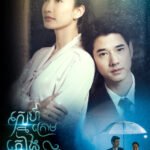
Kon Plous Bonlom Kay
The Tangled Threads of the Heart: Exploring “Rak Salap Lai”
The Thai language, rich with nuance and specific expressions for complex emotional states, offers the term “Rak Salap Lai” (รักสลับลาย). Literally translating to something like “Love Switched Patterns” or “Alternating Love Design,” this phrase captures a particular, often dramatic, flavour of romantic entanglement. It signifies more than a simple love triangle; it evokes a convoluted web of affections where partners, feelings, or circumstances are swapped, misplaced, or intricately intertwined, creating a tapestry of confusion, heartache, and compelling narrative. “Rak Salap Lai” is a potent concept, deeply embedded in Thai popular culture, particularly its dramatic television series (lakorns), reflecting both a fascination with complex human relationships and perhaps underlying societal anxieties about fate, loyalty, and the unpredictable nature of love.
At its core, “Rak Salap Lai” describes situations where the expected or established romantic pairings are disrupted and reconfigured. The “Salap” (สลับ – switch, alternate) points to the core action: A loves B, but circumstances (or perhaps misidentification, amnesia, or a cunning scheme) lead A to be with C, while B might end up entangled with D, who perhaps has a history with A. The “Lai” (ลาย – pattern, design, intricate) emphasizes the complexity. This isn’t a straightforward swap; it often involves multiple individuals, hidden histories, family connections, secrets, and misunderstandings that create an elaborate, often bewildering, pattern of relationships. Think switched-at-birth scenarios where siblings fall for each other’s intended partners, mistaken identities leading to misplaced affections, or intricate webs of past relationships resurfacing to complicate the present.
The most prominent arena for “Rak Salap Lai” is undoubtedly the world of Thai lakorns. It is a beloved and frequently employed trope, serving as a powerful engine for plot development and emotional high stakes. These narratives thrive on the inherent conflict and suspense generated by such tangled situations. Audiences are drawn into the “will they/won’t they” tension, the dramatic irony where viewers know the truth while characters remain ignorant, and the intense emotional fallout – the jealousy, betrayal, heartbreak, and longing that inevitably ensue. These stories often play with themes of destiny versus free will: are these characters fated to be mismatched, or can they overcome the convoluted circumstances to find their true partners? The heightened drama, the tears, the confrontations, and the eventual (usually) satisfying resolution where true love (often the originally intended pairing) prevails, make for addictive viewing.
Beyond mere entertainment, the prevalence of the “Rak Salap Lai” trope might reflect certain cultural undercurrents. It could tap into a fascination with intricate narratives and karmic consequences, where past actions or familial ties ripple through generations to affect romantic destinies. It explores the fragility of identity and the chaos that ensues when it’s mistaken or concealed. Furthermore, these stories often navigate complex social dynamics, including class differences, family honour, and the pressure to maintain appearances, all of which can contribute to the “switched patterns” of love. The dramatic consequences serve as a cautionary tale, perhaps reinforcing the value of honesty, clear communication, and loyalty in relationships, even while indulging in the fantasy of tangled fates.
However, it’s crucial to distinguish the exaggerated portrayals in media from the complexities of real-life relationships. While real life certainly features messy breakups, overlapping affections, and confusing emotions, the highly structured, almost fated coincidences of “Rak Salap Lai” are primarily narrative devices. Yet, the core emotions depicted – the pain of unrequited love, the confusion of divided loyalties, the devastation of betrayal – are universally human. The concept resonates because, even in less dramatic forms, love is rarely simple or linear. It often follows unpredictable paths, gets tangled in past histories, and is subject to external pressures and internal conflicts.
In conclusion, “Rak Salap Lai” is more than just a plot device; it’s a culturally specific term capturing the essence of complex, intertwined, and often switched romantic entanglements. Popularized through Thai dramas, it provides fertile ground for exploring themes of fate, identity, loyalty, and the intense emotional landscape of the human heart. While often presented with heightened drama for entertainment, the concept taps into the universal truth that love’s patterns can be intricate, confusing, and profoundly disruptive, reminding us that the threads connecting human hearts rarely run in straight lines. It stands as a testament to the enduring power of storytelling to unravel, examine, and ultimately make sense of the beautifully complicated design of love itself.

